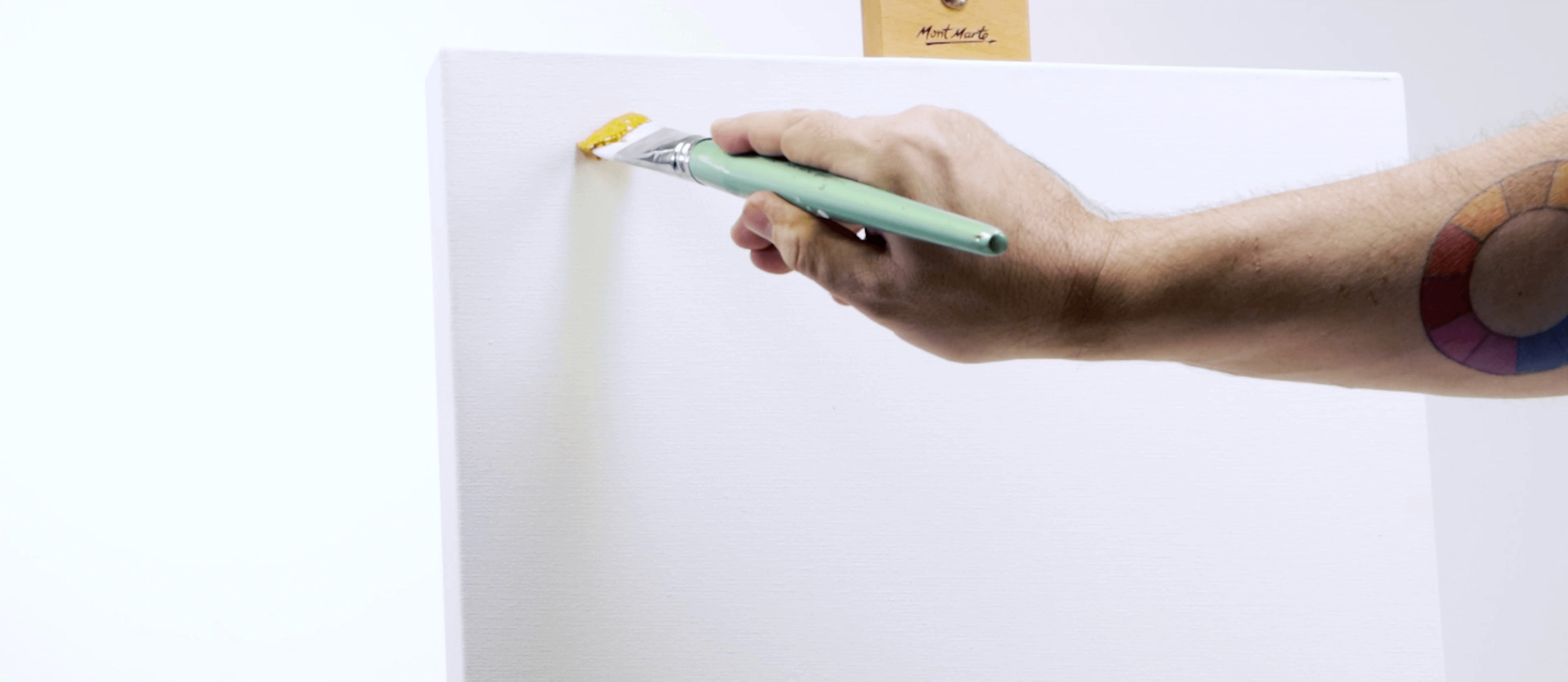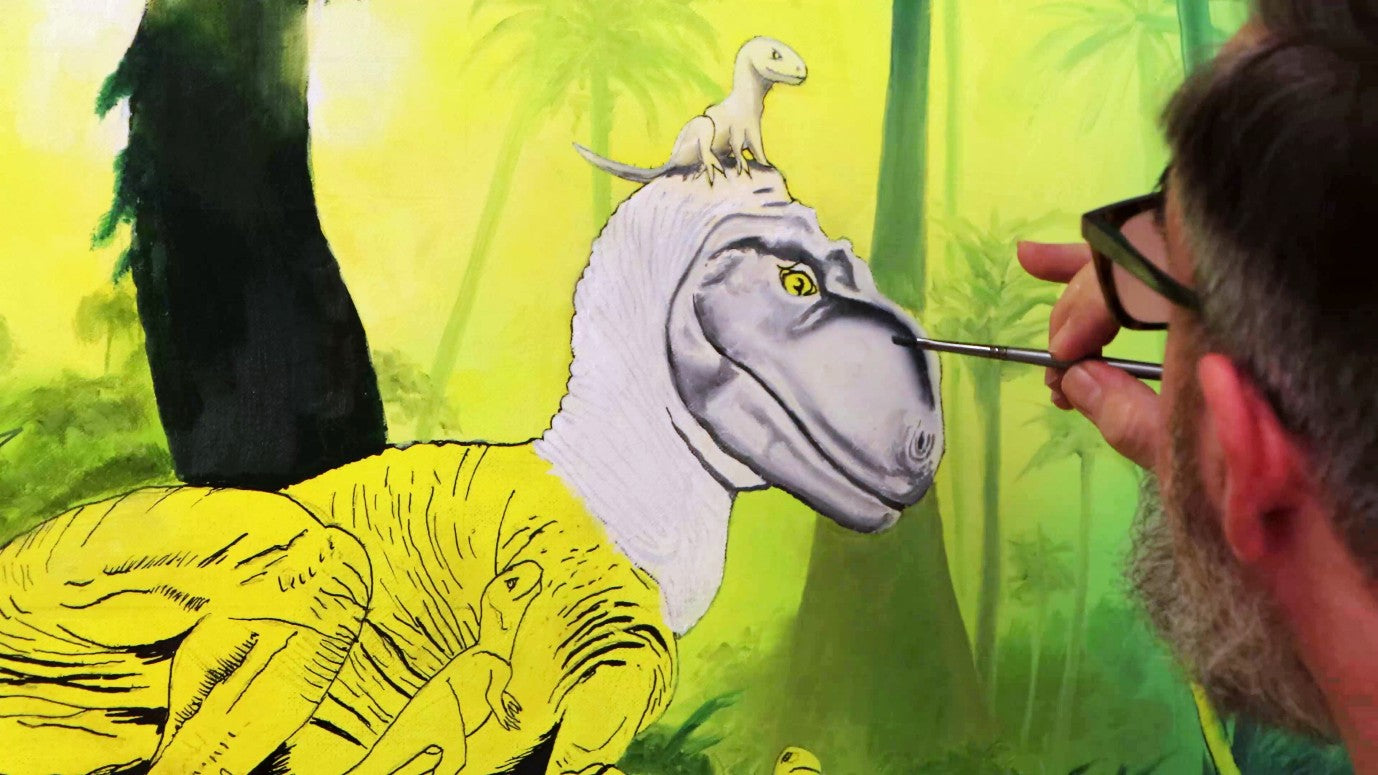From how to prepare a canvas to using stretcher keys, we’ve received a few questions over the times so we’re answering 10 canvas questions.

1. What type of paint should I use on canvas?
Acrylic and oil paints work wonderfully on canvas. Gouache can work but it’s not permanent, because like watercolour, it will reconstitute with moisture and go back to its liquid paint form, but it can be used if you’re looking for a quick project.
2. Can watercolour be used on canvas?
Like gouache, watercolour can be used on canvas, but it won’t be a permanent medium. Watercolour works well on a flat surface, and it will need to be kept away from moisture -- watercolour artworks are usually framed behind glass for this reason. Watercolour can also sink into the weave and weft of the canvas so even coats can be difficult to create. So, if you’re looking for a quick watercolour project, it’s best to use a flat, canvas panel.

3. What should I use to draw on canvas before painting?
It's a great idea to sketch before picking up the paints, especially if you’re a planner. Both graphite and charcoal can be used to draw on a canvas before painting it. Graphite is great for sketching strong lines that won’t move and charcoal can be easily removed, (though it can sometimes mix with paint if there’s some leftovers so try to remove it before painting). To remove graphite, use warm water and dish washing liquid and reach for a kneadable eraser for charcoal.
4. What do you put on a canvas after painting?
Varnishing your artwork will help lengthen the life of your masterpiece and it’ll help protect against UV damage too. With varnishing, you’ll also be able to clean your artwork, so it’ll help stop dirt, dust and grime getting onto your painting. What to put on the canvas after painting will of course depend on the painting.
-
Oil paintings: oil-based varnish like safflower oil, then let it dry for 3-4 days.
-
Acrylic artworks: acrylic varnish like a gloss or matte medium.
-
Pour paintings: acrylic varnish. Remove any silicone oil with cornflour first, then use an acrylic varnish like our iridescent varnish.
To learn how to varnish a painting, check out this how-to.
5. Can you tell me, how to prepare a canvas?
Our Mont Marte canvases are already pre-primed, but if you’re working with another canvas or looking to add a glassy finish, apply a coat of gesso then let it dry. You can then sand it back before applying another coat of gesso. Be sure to add your canvas keys in first to help prevent warping -- this can happen from using lots of paint or large volumes of thick paint. For more on how to prep a canvas, check out our how-to and we’ll show you all there is to know.
6. What is a good canvas size?
This depends on personal preference and your overall project. Some artists like working on large canvases and others find large canvases to be too time-consuming. A rough guide for a good canvas size is around 60cm X 90cm (23.6 x 35.4in) for portraits and landscapes, it’ll give you enough room for plenty of detail. Otherwise, 30cm X 40cm (11.8 x 15.7in) is a good project size that won’t take too long to cover. If you’re looking for a bigger size, try 1m x 1.2m (39.37 x 47.24in).

7. What is the difference between stretched canvas and canvas panel?
A stretched canvas is simply a canvas that has been stretched over a timber frame with mitred joints. A canvas panel is a canvas wrapped board. Canvas panels are much flatter, they can be framed and are a great option for quick projects, while canvases are larger in dimension and don’t need to be framed.
8. Can you paint over a canvas painting?
You can, clean the canvas first, then either paint over the painting or sand the painting back and apply a coat of gesso. With oil paints, you can sand the artwork back and apply a new coat over the top too. For more, check out our how to upcycle acrylic paintings video.

9. What’s the difference between single thick and double thick canvases?
Single thick canvases have a smaller profile (thinner timber frame) than a double thick canvas, meaning the width of the edges to the wall is narrower on a single thick. Single thick canvases are great for a range of acrylic paint projects and double thick canvases are great for holding thicker paints like oils.
10. How do I use canvas keys?
Canvas keys stretch the canvas by expanding the wooden frame. A tight canvas is easier to paint and won’t sag or warp. You can learn how to use canvas stretcher keys here. Canvas keys can be inserted before, during or after your painting. Just slide the keys into the corners, push them in as far as you can, then hammer gently. Each corner will need two canvas keys and our Mont Marte canvases include canvas keys in the back, how good!

We hope that you feel inspired to grab a canvas and create something for yourself. Be sure to #montmarteart or tag us @montmarteart on Instagram or Facebook, we’d love to see what you create.
Get started and browse our canvas range or check out more of our handy how-tos here.






























